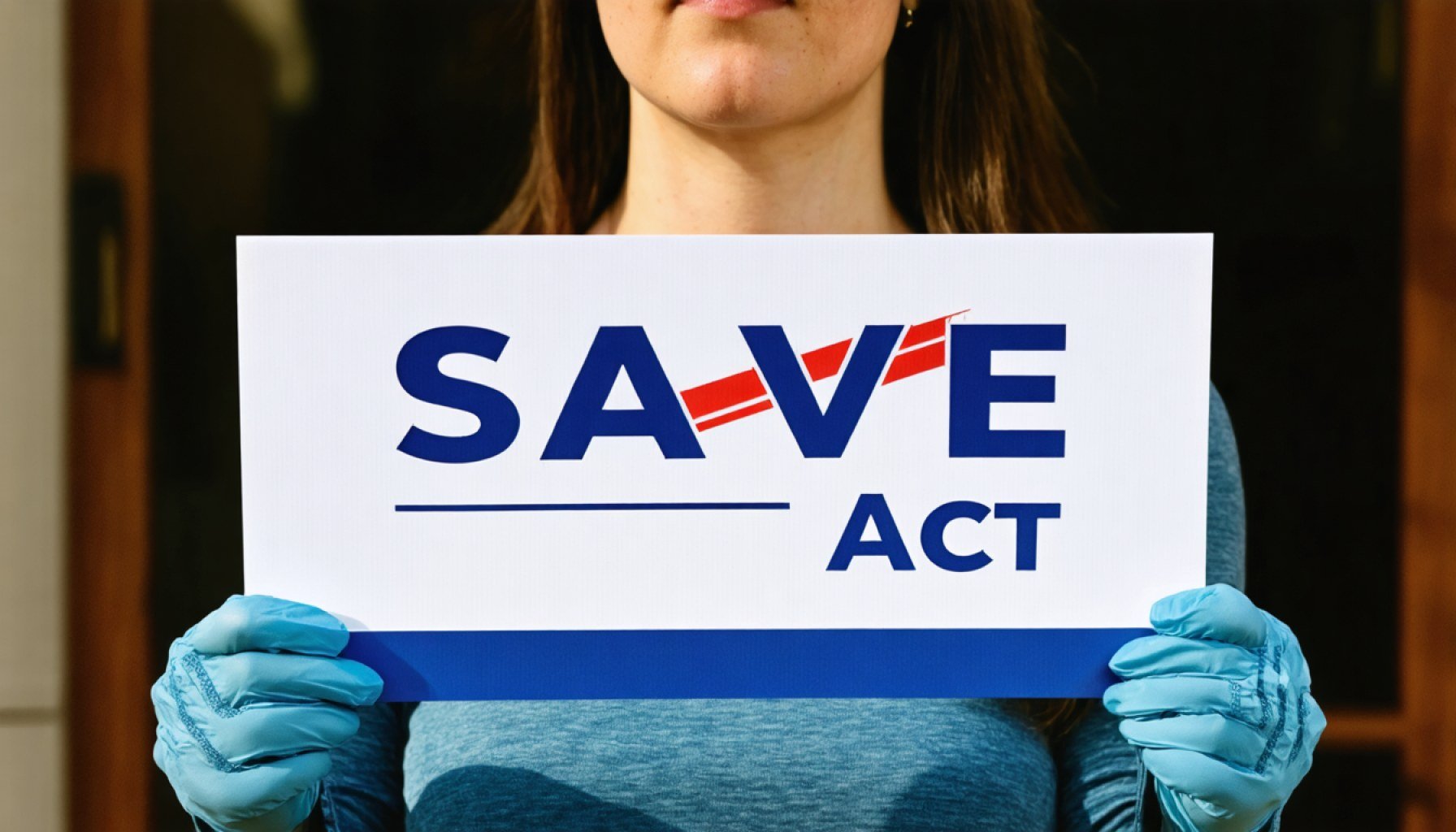KEY TAKEAWAYS:
- Ensure Your Documents: If passed, accessing a birth certificate or passport becomes crucial for voter registration. Prepare now to avoid last-minute scrambles.
- Raise Your Voice: Engage with community leaders and advocate for legislation that reflects modern realities, including name changes.
- Stay Vigilant: Follow related legal developments to stay informed about changes in voter rights.
- Push for Innovation: Champion broader acceptance of digital IDs to make voting more accessible.
As whispers of eroded rights circulate, staying informed and proactive is crucial to protecting the foundation of democracy. Ensure your voice—and vote—remain intact.
The ISSUE: The SAVE Act stirs debate by demanding high-level identification—specifically a birth certificate or passport—each time someone registers to vote. Critics warn it could sideline many voters, particularly women who have changed their names post-marriage, given the omission of marriage certificates as valid documentation.
CHALLENGES FACED: Data reveals that approximately 80% of married women alter their names, a demographic potentially impacted by this legislation. History shows that stringent ID laws often lead to reduced voter turnout among marginalized communities. Such groups frequently lack immediate access to required documents, making this bill a barrier rather than a safeguard.
THE OUTLOOK: As the world embraces digital solutions, the SAVE Act clings to outdated paper-based methods. This could stifle progress in modernizing the voting process, burdening voters unable to meet these rigid demands. Implementation costs—and potential litigation expenses—could escalate, challenging taxpayers and the legal system alike.
KEY TAKEAWAYS:
- Ensure Your Documents: If passed, accessing a birth certificate or passport becomes crucial for voter registration. Prepare now to avoid last-minute scrambles.
- Raise Your Voice: Engage with community leaders and advocate for legislation that reflects modern realities, including name changes.
- Stay Vigilant: Follow related legal developments to stay informed about changes in voter rights.
- Push for Innovation: Champion broader acceptance of digital IDs to make voting more accessible.
As whispers of eroded rights circulate, staying informed and proactive is crucial to protecting the foundation of democracy. Ensure your voice—and vote—remain intact.
The SAVE Act: A Potential Barrier or a Security Measure?
What are the Pros and Cons of the SAVE Act?
Pros:
1. Enhanced Security: By requiring high-level forms of identification, the SAVE Act aims to protect against voter fraud, ensuring that only eligible voters can register and cast their votes.
2. Encourages Preparedness: Citizens will be urged to maintain up-to-date identification, which could lead to broader benefits beyond voting.
Cons:
1. Voter Suppression Risks: The requirement of birth certificates or passports could disenfranchise segments of the population, particularly women who change their names after marriage.
2. Implementation Costs: The cost of implementing and enforcing these stringent measures could be high, both financially and legally.
What are the Predicted Market Trends and Innovations in Voter Identification?
The voter identification market is likely to experience a shift towards digital solutions. Countries around the world are increasingly adopting digital IDs as secure, convenient means for personal identification. However, the SAVE Act remains entrenched in traditional paper-based identification methods.
Key Trends:
– Digital Transformation: The push for digital IDs is gaining momentum, offering a more sustainable and efficient alternative to paper-based identification.
– Biometric Verification: Innovations in biometric technology, such as fingerprint or facial recognition, are being explored for future voter identification to enhance security and accessibility.
How Can the SAVE Act Be Improved to Reflect Modern Realities?
To modernize and render the SAVE Act more inclusive, several adjustments could be considered:
1. Inclusion of Digital IDs: Accept digital forms of identity proof, which would streamline the process and make it more accessible.
2. Wide Acceptance of Name Change Proofs: Recognize marriage certificates and other documents that legally affirm a name change as valid identification forms.
3. Robust Public Awareness Campaigns: Educate the public on the importance of updating identifications and provide assistance programs for obtaining necessary documents.
By advocating for these improvements, the SAVE Act can better align with current technological advancements and societal needs.
For more information on voting rights and regulations, visit ACLU or Brennan Center for Justice.
Stay informed and engaged to protect your voting rights and ensure fair, accessible elections for all.











